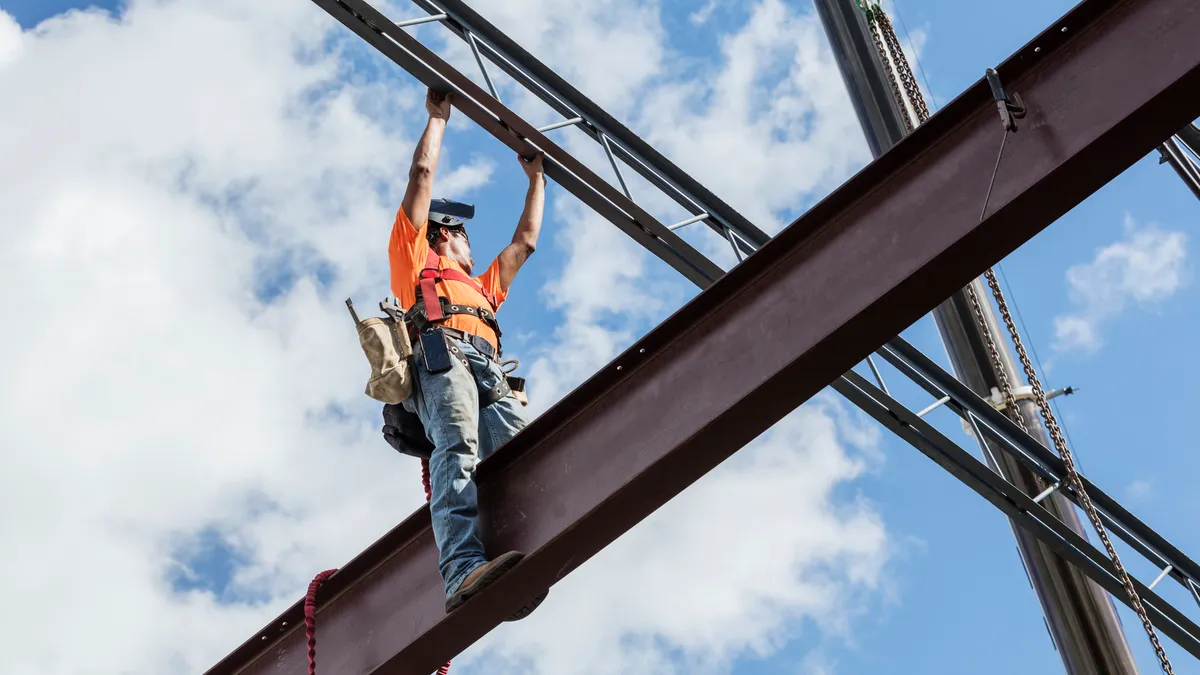Dive Brief:
- Economic optimism has surged worldwide, with the percentage of business executives seeing brighter economic prospects than six months ago rising to 48% from 40% in March, McKinsey found in a worldwide survey. The share of executives who believe conditions worsened during the period fell to 28% from 40%
- “For the first time in more than a year, global executives are more positive than negative about conditions in the economy,” McKinsey said, citing the views of 1,044 respondents. Less than half of those surveyed anticipate an increase in interest rates — the smallest share of executives since the quarterly survey in June 2021.
- Inflation and geopolitical turmoil persist as the top risks to economic growth, the executives told McKinsey, while identifying income inequality and transitions in political leadership as rising threats to growth in their home countries.
Dive Insight:
Private- and public-sector economists, while flagging recent signs of economic vitality, have hedged their forecasts of recession later this year.
Goldman Sachs economists last month trimmed odds of a 2023 downturn to 25% from the 35% probability they set in March after three bank failures.
Fannie Mae economists last month upgraded their forecast for 2023 growth to 0.1% from minus 0.3% while predicting that the economy will shrink 1.5% during the fourth quarter and 0.7% during the first quarter of 2024.
“Mixed data has painted a muddled picture of macroeconomic conditions in recent months, though a recession remains the most likely outcome of the rapid tightening of monetary policy and late-stage business cycle dynamics,” Fannie Mae said.
Federal Reserve economists at a policymaking gathering last month affirmed their March forecast that a mild recession will start later this year while noting “continued strength in labor market conditions and the resilience of consumer spending,” according to meeting minutes.
In light of such persistent vitality, “the staff saw the possibility of the economy continuing to grow slowly and avoiding a downturn as almost as likely as the mild‑recession baseline” forecast, the minutes said.
Economists at the Atlanta Fed estimated on Monday that the economy during the second quarter grew 2.3% on an annual basis, significantly higher than their 1.6% prediction in late June.
“One of the surprising things about the economy is just how much momentum it continues to have,” San Francisco Fed President Mary Daly said Monday in response to a question at the Brookings Institution. Employment, inflation and economic growth have exceeded expectations.
Cleveland Fed President Loretta Mester echoed Daly in a speech Monday.
“The economy has shown more underlying strength than anticipated earlier this year, and inflation has remained stubbornly high,” Mester said.
Average hourly earnings rose 0.4% in June and unemployment fell to 3.6% from 3.7% in May, the Labor Department said Friday. Payrolls increased 209,000, prolonging the slowing in growth since early 2021 but still exceeding the pre-pandemic trend.
“In order to ensure that inflation is on a sustainable and timely path back to 2%, my view is that the [federal] funds rate will need to move up somewhat further from its current level and then hold there for a while as we accumulate more information on how the economy is evolving,” Mester said.
Both Mester and Daly forecast that the Fed will probably hike the main interest rate twice more this year if current trends in wages, employment, growth and inflation persist.
“We’re likely to need a couple more rate hikes over the course of this year to really bring inflation back into a path — its longer, sustainable 2% path,” Daly said.
The Federal Open Market Committee suspended rate hikes on June 14 even as officials raised their median projection for the federal funds rate at the end of the year to 5.6% from 5.1% in March. The main rate currently is set at a range from 5% to 5.25%.















